William Wilde (1815–76) as historian— a bicentenary appraisal
Published in 18th-19th Century Social Perspectives, Features, Issue 5 (September/October 2015), Volume 23AMONG THE TEN PROFESSIONAL AND RECREATIONAL ACTIVITIES ASCRIBED TO WILLIAM WILDE ON HIS MEMORIAL PLAQUE AT 1 MERRION SQUARE, DUBLIN, IS ‘HISTORIAN’.
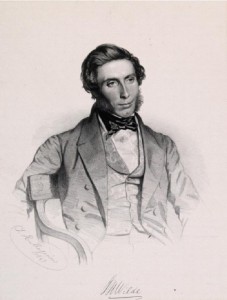
William Wilde. (National Gallery of Ireland)
William Wilde’s Celticism, his archaeological, antiquarian and topographic interests, and his knowledge of folklore and language informed his work as a historian. Wilde appears to have distanced himself from Ireland’s contentious political history, preferring other explorations of the country’s past. At the beginning of 1846 he stated:
‘No matter how the early political history of our native land may be darkened, of her literary and scientific history, her monuments and her antiquities, we have all, as Irishmen, a just right to glow with honest pride’.
As a historian, Wilde is probably best known for his demographic work, particularly his extraordinary contribution to the 1851 census, which is arguably the finest of his polymathic achievements. It is certainly the one that has captured the attention of later historians, notably Peter Froggatt and, more recently, Peter Gray. The 1851 census dealt with the decade of the Great Famine, and much of Wilde’s other historical work was written in the Famine’s later years, or its immediate aftermath, and was clearly influenced by that calamitous event. Wilde intuited correctly the Famine’s catastrophic dimensions, referring in 1848 to ‘the great social revolution which this country is at present undergoing’.
As editor of the Dublin Quarterly Journal of Medical Science from 1846 to 1849, the Famine’s defining years, Wilde made a valuable contribution to Famine studies, and to Irish medical, social and political history. He eschewed the polemic of the contemporary Dublin Medical Press but, like its editor, Arthur Jacob, was ever conscious of the dignity and status of the medical profession. This is clearly seen in his leadership role in the campaign for improved salaries for doctors temporarily employed in the public medical service during the Famine, an issue that attracted the luminaries of the profession, mobilised doctors nationwide and proved to be significant in mid-nineteenth-century Irish medical politics.
‘The food of the Irish’
Wilde’s penchant for history from below, for social rather than political analysis, can be seen in his monograph Irish popular superstitions, which was published in 1852, and in essays such as ‘The food of the Irish’, which appeared in the Dublin University Magazine in February 1854, a few years after the potato had failed repeatedly and catastrophically in Ireland. The Great Famine decimated Ireland’s potato people, and with them many of their customs, folk practices and mores. Wilde’s ‘Food of the Irish’ was unashamedly nostalgic, a valediction to the potato and to a way of life that was irretrievably passing. It was also profoundly ideological.
Wilde displays his considerable erudition in ‘The food of the Irish’, with Latin translations, Gaelic terminology and translation, references to antiquarianism and folklore, snatches of rhyme and song, and copious explanatory footnotes, among other literary devices. This work is of interest for its historical, sociological and cultural content, and for the light it sheds on Wilde’s political ideology, but the structure is unwieldy, the content occasionally meandering and self-indulgent, and the language by turns engaging, inflated and intemperate. This is surprising, given Wilde’s editorial experience, but the explanation probably lies in the conflation of variant concepts, the tension between the historical and ideological content, with the latter seriously undermining the élan of the former.
Wilde attributed the limited culinary skills of the pre-Famine Irish, the Munster and Connacht peasantry in particular, to the paucity of their diet. In the essay’s opening section, he more or less accurately described the daily fare of more than half of the country’s pre-Famine population of 8.5 million: potatoes and buttermilk, if they were lucky, but as often as not potatoes and water. The farming and higher rural and urban social classes enjoyed a varied, high-protein diet of milk, oatmeal, wheaten bread, meat, fish, eggs, potatoes and vegetables. In contrast, the diet of agricultural labourers, cottiers and small farmers with less than twenty acres of land gradually contracted to a few staples. By the opening decades of the nineteenth century, demographic and commercial pressures had reduced a substantial section of the Irish population to living on potatoes, oatmeal, milk and fish.
Numerous commentators in the eighteenth and early nineteenth centuries noted the health and happiness of the Irish poor, which they attributed to their peasant diet of potatoes and milk. On this simple diet, according to Wilde, ‘the men were vigorous, the women hearty and handsome, and the children pretty and abundant’. He continued in similar vein, heaping inordinate praise on the nurturing and social qualities of the potato: ‘When kitchened with “point”, mollified with milk, or softened by a drop of the crature’, the like of the potato will never again be found for ‘rent-paying, pig-feeding, love-making, child-breeding, faction-fighting, and country-dancing properties’. (To ‘kitchen’ was to add flavouring or relish to food; ‘point’ was anything that was used for that purpose.)
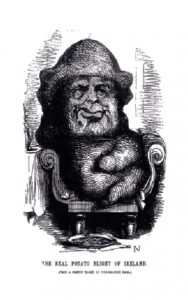
Daniel O’Connell was caricatured in the English press as the big, ‘potato-faced’ agitator, ‘the very impersonation of a laughing lumper’. (Punch)
The potato’s defects
Wilde was also aware of the potato’s defects as a food source, not least its proneness to failure and disease. Furthermore, the potato is relatively bulky, bruises easily and is difficult to transport and store. It was also the Irish experience that it seldom formed a complete year’s food from harvest to harvest, even in the best of seasons. The potato never lasted in good condition, and seldom in sufficient quantity, until the crop of the succeeding year was fit to dig, and, no matter how great the supply, it could never be carried over, like cereals, as insurance against a period of scarcity.
The quality of the Irish peasant diet deteriorated in the first half of the nineteenth century, which may have been owing, in part at least, to the substitution of inferior but higher-yielding brands of potatoes for traditional ones. The main culprit appears to have been the ‘lumper’, a term Wilde employs synonymously for potato throughout ‘The food of the Irish’. The ‘lumper’ potato, which was introduced from Scotland at the beginning of the nineteenth century, was described as watery but it was reliable and high-yielding, required very little manure and could be grown on inferior and marginal land. The ‘lumper’ represented quantity over quality, and its proliferation in the pre-Famine period reflected increased population and food supply pressures, and deteriorating living standards among the poor.
A way of life
Wilde’s essay was more than a disquisition on the potato’s nutritional qualities; it was a depiction and encapsulation of an entire way of life, featuring, for instance, social and food customs; seasonal migration by the peasantry; and the potato’s role in pre-Famine mendicancy. Wilde described the mechanisms of potato preparation and consumption within the household, including the cooking process, seating arrangements, the practice of peeling the potato with the thumb nail of the right hand, and the presence during meals of the rent-paying family pig, which was given the skins and inedible portions of the potato.
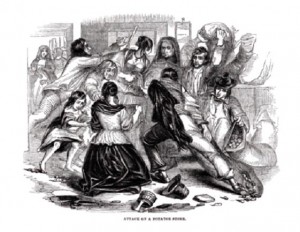
‘Attack on a potato store’—Wilde claimed that the potato fuelled political agitation.
During the summer months of June, July and August, large numbers of the Irish peasantry tramped from the poorer to the richer counties, from west to east, or to England and Scotland, for harvest work. In their absence, the families of these migrant labourers generally supported themselves by begging. Able-bodied men regarded the practice as particularly shameful and rarely begged. They seemed more concerned with the social niceties, with respectability. Women were no less aware of the social taint attached to mendicancy but the responsibility for feeding their children devolved ultimately on them. In Wilde’s words, the peasantry ‘seldom begged near home’. Here, again, he presents us with a truism of pre-Famine Irish peasant life and mores: a sense of shame prompted non-habitual Irish mendicants to beg in places where they were unknown. According to Wilde, potatoes were the ‘circulating medium for the mendicant’, the beggars’ currency. It was customary, almost a social obligation, for a householder to give at least a handful of potatoes to every mendicant who called to the door. Considerable quantities could be accumulated in the course of a day’s begging, and the general practice was to dispose of the surplus to huxters in exchange for tobacco, snuff, soap, salt, herrings and cheap clothing.
‘Agitation was fed by the potato’
Thus far, Wilde’s text is linear and coherent, one in which he personified, apostrophised and eulogised the potato in a meditation that was affectionate, engaging and nostalgic. It was nostalgia with an ideological twist, however. Wilde suggested that the potato’s positive attributes held the seed of its ultimate destructiveness. Its bounty and ease of cultivation created an excessive and dangerous dependency, which in turn put pressure on land and resources, increased agricultural rents inordinately, while simultaneously deflating wage rates for labourers. Ultimately the potato demoralised the Irish people and acted as a barrier to economic and social progress, to modernity. It facilitated the country’s idleness, indolence and regressive agrarian practices, and, in a fanciful leap, Wilde claimed that the potato fuelled political agitation also. ‘Agitation was fed by the potato’, he pronounced, and in the pre-Famine period agitation seemed to be the only force that threatened what he contrarily called the country’s ‘onward progress’. Daniel O’Connell, who defined and dominated Irish nationalism in the first half of the nineteenth century and who was caricatured in the English press as the big, ‘potato-faced’ agitator, was, in his pomp, ‘the very impersonation of a laughing lumper’. Wilde contended that O’Connell’s ability to control the elemental forces in Irish society was waning, and that the monster he had summoned must soon prove destructive to all.
But it was potato blight rather than potato-engendered agitation that was to dictate the country’s future. In a non-linear, randomly structured exposition, Wilde described the Famine’s unfolding and impact: the sudden onset of Phytophthora infestans and the government’s response; social implosion and institutional overcrowding; increased taxation, economic retrenchment, eviction, bankruptcy and the disposal of encumbered estates; mass mortality, emigration and continuing depopulation. Wilde estimated that from the summer of 1846 to the end of the Famine, the country suffered a population loss of almost 2.5 million through death, emigration and averted births. He believed that some of the government’s relief measures were ill-conceived, particularly the public works, but, despite the obvious faults in some programmes, Wilde claimed that many more people would have died in the absence of such government interventions. By way of further exculpation, he reminded the government’s critics that ‘a large portion of the country’ was then in ‘almost open rebellion against the queen’.
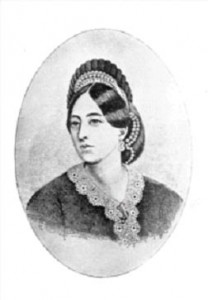
Wilde’s wife Jane, the poet ‘Speranza’—their conflicting interpretations of the Famine’s impact must have led to a certain domestic frisson.
Despite the mass death and almost apocalyptic suffering he described, Wilde perceived the Famine in a positive light. ‘Have we lost a man too many?’, he questioned, and opined: ‘the best friends of Ireland and her people will say not’. In his analysis, the Famine shattered the country’s demoralising dependency on the potato, its economic and agrarian backwardness, and its failure to modernise. The loss of the potato in the mid- and late 1840s helped to quell rebellion and exposed the bankruptcy of an inept, extravagant and shallow gentry class, and deficiencies in both land tenure and farming practices. ‘Upon the whole,’ Wilde concluded, ‘Irish agriculture has been greatly benefited by the famine.’
This was a classic avowal of Liberal ideology, and of an interpretation of the Famine as divinely ordained. Wilde’s progressive and providentialist beliefs were signalled in the essay’s epigraph, an extract from Charles Trevelyan’s government apologia ‘The Irish Crisis’, which was first published in the Edinburgh Review in January 1848:
‘Unless we are much deceived, posterity will trace up to that famine the commencement of a salutary revolution in the habits of a nation long singularly unfortunate, and will acknowledge that on this, as on many other occasions, Supreme Wisdom has educed permanent good out of transient evil.’
As Peter Gray has recently indicated, the ideological interpretation that Wilde broached in ‘The food of the Irish’—the Famine as agent of progress and modernity, albeit at a significant cost in lives and suffering—reappeared, more elaborately formulated, in the general report on the 1851 census, which was published in 1856. As Gray also suggests, wryly, Wilde’s analysis of the Famine’s impact and the conflicting nationalist interpretation of his wife Jane, the poet Speranza of the Nation newspaper, must have led to a certain domestic frisson.
Laurence M. Geary lectures in Irish history at University College Cork.
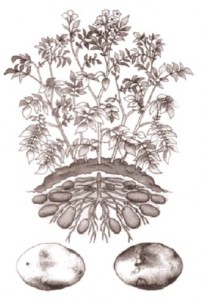
In ‘The food of the Irish’ Wilde more or less accurately described the daily fare of more than half of the country’s pre-Famine population of 8.5 million: potatoes and buttermilk. (Robert Ballagh)
Wilde’s Famine questionnaire
From the Famine historian’s perspective, perhaps Wilde’s greatest contribution as editor of the Dublin Quarterly Journal of Medical Science was the elaborate questionnaire he distributed among Irish doctors in late August 1848, seeking information on what he termed ‘the late disastrous epidemic’, the deadly famine diseases that had ravaged the country since the first failure of the potato crop in the autumn of 1845. More than 100 medical practitioners responded to his request for epidemiological information. Some parts of the country were underrepresented in the returns, especially the west, where, according to Wilde, the epidemic had committed ‘fearful ravages’ and many doctors had died as a result of disease contracted in the course of their work. The medical accounts that were submitted run to almost 300 pages of text and constitute one of the most important primary sources for analysing the diseases that prevailed during the first four years of potato failure. These reports provide evidence that two types of disease predominated and were largely responsible for excess mortality: fever, a generic term that embraced typhus fever, relapsing fever and typhoid or enteric fever, infections that had yet to be distinguished scientifically; and the gastro-intestinal diseases dysentery and diarrhoea. There were graphic accounts of other infections also, as well as harrowing descriptions of the individual and communal impact of starvation.
Further reading
P. Gray, ‘Accounting for catastrophe: William Wilde, the 1851 Irish census and the Great Famine’, in M. De Nie and S. Farrell (eds), Power and popular culture in modern Ireland. Essays in honour of James S. Donnelly, Jr (Dublin, 2010).
J. McGeachie, ‘Wilde, Sir William Robert Wills (1815–1876)’, Oxford Dictionary of National Biography (Oxford, 2004).
T.G. Wilson, Victorian doctor: being the life of Sir William Wilde (London, 1942).
















